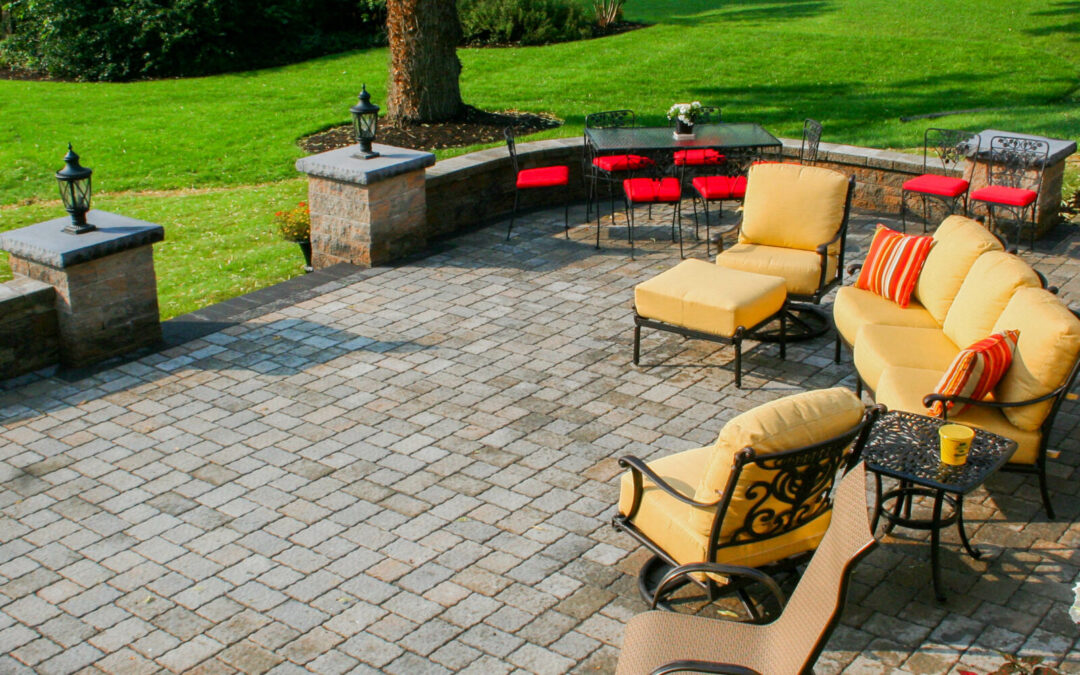You can think of hardscapes as simply an outdoor room: Hardscapes is a term used for patios, landscaped walkways, sitting walls, retaining walls, water features, fire pits, landscape lighting, grill surrounds, pergolas, and more. They are landscape materials brought in to build structures in your yard.
Hardscape Patios
Think about your own yard. If you walk out your back door and don’t have a designated spot to comfortably sit and enjoy yourself, something tells me you would not go outside very often. But if you have a brick patio that has a table and comfy chairs, you probably sit there and enjoy your cup of coffee in the morning or a leisurely dinner in the evening. A place to relax and enjoy the beautiful flowers that are in bloom – that’s the joy that hardscapes bring.
Natural Stone Patio
Add a welcoming feature to your backyard with this attractive, long-lasting brick and stone patio. Our design easily adapts to fit your yard. Choose from a variety of stone types and brick styles. The result will be permanent and maintenance-free. We assembled our patio from used street pavers that we bought from a brickyard. Individually, the bricks look a little crude, covered with tar and well worn, but the overall effect is perfect. Then we chose tumbled Wisconsin limestone for the border. The tumbling rounds the edges and gives the stone a worn look that complements the rustic appearance of the used pavers.
Clay Pavers
Concrete pavers are the most economical choice for paving patios. They are available in many sizes and colors. Traditional clay pavers have a truer brick color and cost a bit more. Concrete pavers are available at home centers and landscape retailers, but you’ll probably have to find a brickyard to buy clay pavers. You’ll need about 4-1/2 bricks for every square foot, assuming an average sized 4 x 8-in. brick. It’s difficult to figure out the exact amount of brick needed for an irregularly shaped patio like this, so order about 15 percent extra.
Set the Border Stone
The next step in the project is to lay the stone border. Measure the thickness of a few stones to get an average and compare this with the thickness of the bricks you’re using. Then adjust the depth of the sand bed to compensate for the difference in thickness. Your goal is to get the stones and brick even on the top.
Flagstone and Pea Gravel Patio
Mixing materials such as flagstone and pea gravel can provide an interesting patio space while saving money at the same time. For this patio, less expensive pea gravel was used with some pricier flagstone. Mixing and matching different textures, colors and materials is one of the best ways to build a unique stone patio. And don’t forget to frame the patio with patio benches or these DIY patio planters.
Contact us
Our masonry, concrete, hardscape, and paving experts serve all central and northern New Jersey including Bergen, Essex, Hudson, Hunterdon, Passaic, and Union Counties. We specialize in custom design. Address 55 Terrill Road, Plainfield, NJ 07062. https://junsproservices.com
Contact us at 908-322-1533.

